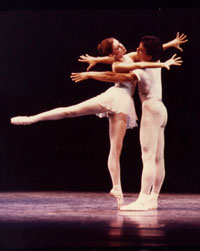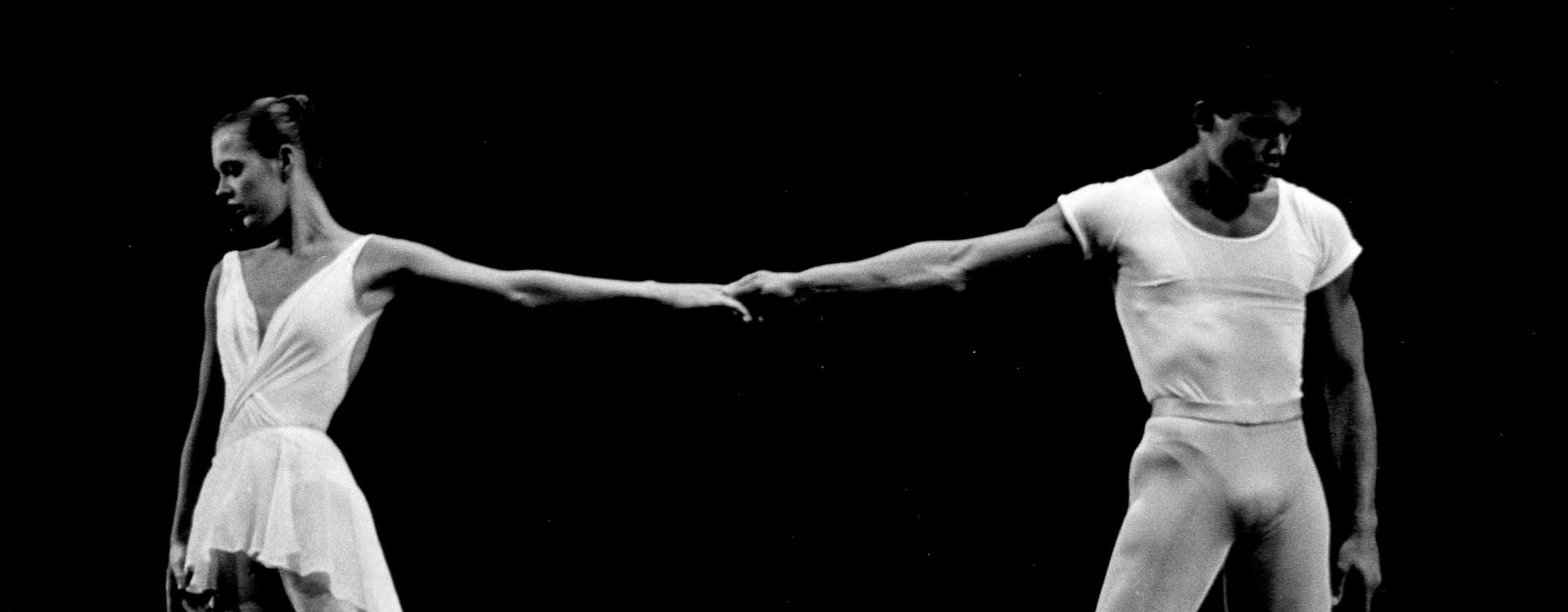
Choreography: George Balanchine
Music: Alexei Haieff
Lighting: Jean Rosenthal
In 1985, Nancy Goldner of Knight-Ridder Newspapers wrote a column about “lost ballets” in which she made the following comments:
“The lost ballet refers to a dance, dropped from a company’s repertory for a variety for practical reasons, that cannot be revived because in the interim, everyone has forgotten the steps.”
“The assumption underlying references to a lost ballet is that is wasn’t the intention of the choreographer to lose it. A lost ballet is a victim of circumstance. Numerous ballets by George Balanchine are dubbed ‘lost,’ and now that his is dead these works have acquired legendary status…”
Such a work is Divertimento. Until its May 1985 revival by State Ballet of Missouri, this Balanchine ballet had been considered “lost.”
Set to the Divertimento for small orchestra by the Russian–American composer Alexei Haieff, this ballet was premiered in 1947 by Ballet Society (original name of the New York City Ballet). It was dropped from the company’s repertory in 1952 and later was dubbed “lost” because it was believed no one remembered the steps.
But in 1981, two members of the original Divertimento cast- State Ballet of Missouri Artistic Director Todd Bolender and Francisco Moncion- began talking about reviving the ballet. For four years, they collaborated during mutually available intervals in both artists’ active schedules. Permission to perform the ballet had to be obtained from Tanaquil LeClerq, a member of the original Divertimento cast and owner of the rights to the ballet. It wasn’t until the fall of 1984, when LeClerq felt that all the moves had come together clearly, that she agreed to license the work.
In addition to Mr. Bolender and Mr. Moncion, other members of the original cast were Mary Ellen Moyland, LeClerq, John Taras, Lew Christensen, Gisella Cacialanza, Elsie Reiman, Beatrice Tompkins, and Fred Danieli. The ballerina role was also danced by Maria Tallchief.
Considered a perfect chamber work for a leading couple and four supporting couples, Divertimento is a short ballet, “like a breath.” Mr. Bolender calls Divertimento “a little jewel. It’s fun, lovely, light and joyous, and makes no pretense of being elaborate. It’s just wonderful dance.”
The critics liked it as well. Walter Terry of the New York Herald Tribune described the original production of Divertimento as “an out-and-out joy…a delicious piece of classical dance with…wonderful, gracious elegance. It is typically Balanchine in its pattern weaving arm actions on adagio episodes, in the contrapuntal handling of some of the group movement and in the invention which assembles a corps of dancers upon the stage, suspends the action and permits individuals or small units to emerge from repose, dance a theme or a contributory phrase and return to the sustained pattern.”
